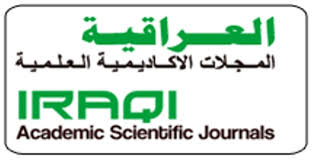Musical taste and its relationship to functional exchange Between the religious and secular lyrical heritage
DOI:
https://doi.org/10.59767/bfj.5300.1982Keywords:
Musical, functional, religious, heritageAbstract
The current study came to shed light on the process of musical taste and its relationship to the functional exchange between the religious and secular lyrical heritage, which the researchers formulated with the following question: (Is there a relationship in the process of musical taste in the functional exchange between the religious and secular singing heritage). Which aimed to: Reveal the process of musical taste and its relationship to the functional exchange between the religious lyrical heritage and the worldly lyrical heritage. The third chapter included the selection of (17) samples from the research community converted between the religious and secular lyrical heritage. As for the fourth chapter, the results of the research included the following: The impact of the process of musical taste in the functional exchange between the religious and secular lyrical heritage and vice versa, on (Iraqi songs, radat, and virtues) the most famous and popular, and popular in Iraqi society. In light of the results, the researchers concluded the following: taking advantage of the technical and artistic advantages in the production and performance of the worldly lyrical heritage, and applying it in the production of religious heritage, while adhering to the privacy imposed on it by the religious pressure Then recommendations, proposals.
References
Aaron, C.(1961). How do we taste music. (H. Mahmoud, Trans Cairo: The Franklin Institute for Printing and Publishing.
Al Hashemi, A.(1990). The Artistic Vision in the Iraqi Song (The Iraqi Melodic March). Baghdad: House of General Cultural Affairs.
Al Tomah, S.(2003). Legacies and Rituals in Karbala. Beirut: Dar Al-Mahjah Al-Bayda.
Al-Adhami, H.(2001). The Iraqi Maqam To Where. Beirut: The Arab Foundation for Studies and Publishing5.- Al-Allaf, A.-K.(1991). Old Baghdad. Beirut: Arab House for Encyclopedias.
Al-Ansari, M.(1970). Popular Proverbs in the Baghdadi Song. Baghdad: Popular Heritage Magazine, Ministry of Culture and Information, Issue: 4.
Al-Hefni, A.-M.(1992). The Philosophical Lexicon. Lebanon: Dar Ibn Zaydun for Printing, Publishing and Distribution.
- Baghdadi, A.(2000). Baghdad in the Twenties. Baghdad: General Cultural Affairs House.
El Helou, S.(1995). Musical Taste and History of Egyptian Music. Cairo: Life Library House.
Farid, T.(2001). The Arab Musical Heritage and the Iraqi Musical Heritage. Baghdad: University of Baghdad / College of Fine Arts
Hayal,S.(2010). Responsive Performance in the Hussainian Responses. Baghdad: Department of Musical Arts - College of Fine Arts - University of Baghdad, master's thesis.
Matar, A.(1986). Teaching music. Cairo: House of Science and Culture.
Qalaji, A.(2006). Al-Tawashih and Religious Songs in Aleppo. Kuwait: Foundation for the Abdul Aziz Saud Award for Poetic Creativity.
Reid, H.(1986). Presenter of Art. (Samir, Trans.) Baghdad: General Cultural Affairs House.
Rifaat, A.(1985). Popular Song and Lyrical Folklore in Iraq. Baghdad: Al-Jahiz Press.
Salem, K. (1988). Colors of Iraqi Singing. Baghdad: The Socialist Library
Downloads
Published
How to Cite
License
Copyright (c) 2023 Fadhil Aram Lazim, Jabar Khamat Hamza

This work is licensed under a Creative Commons Attribution 4.0 International License.







